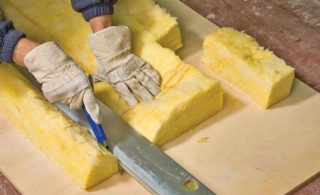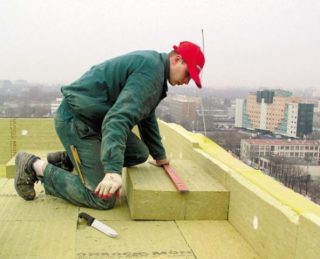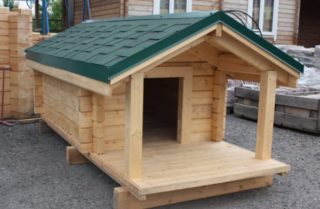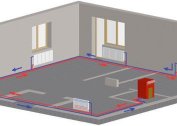Mineral wool is a popular and effective thermal insulation used for internal and external works in the arrangement of residential and commercial buildings. A feature of the material is its unique spatial structure, providing high performance. Violation of the arrangement of the fibers leads to an increase in the thermal conductivity of the product, which requires the choice of a special technology for cutting plates.
Characteristics and properties of mineral wool
You need to cut the insulation with tools that are best suited to its type and technical characteristics.
To conduct thermal insulation work, the following types of mineral wool are used:
- Stone. Consists of integrated dolomite rock fibers. Basalt, which is characterized by high strength, is mainly used for manufacturing. The material is used as insulation and for the manufacture of acoustic panels. Cutting stone wool is easy, as it is soft and pliable.
- Slag. It is made from steel industry wastes. It is used more in the decoration of utility rooms, as it contains impurities of toxic materials, has a sharp unpleasant odor. Cutting mineral wool in slabs is difficult, as it is fragile and unstable to pressure.
- Glass. The raw materials for production are cullet, lime and stone chips. Consists of many interwoven glass fibers that break easily. Available in tightly twisted rolls. Cutting glass wool is easy, as the material lends itself to any sharp tool.
The quality of cutting insulation determines the convenience of its installation and the quality of the final result.
Proper material handling
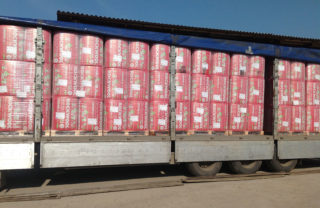
Since the material is characterized by porosity, brittleness and hygroscopicity, it must be handled accordingly.
When transporting and storing mineral wool, it is recommended to observe the following rules:
- In the process of loading and unloading, do not drop the packaging, but carefully place it, avoiding their falls and strong compression.
- Transport bales in covered trucks, laying them horizontally on a flat bottom. Fix the insulation so that it does not hit the body walls.
- Store products in dry enclosed spaces. If this is not possible and it is stored on the street, cover it with film or tarpaulin to protect it from rain.
- To take out plates from a pack just before their laying. This will prevent moisture absorption and reduce the risk of accidental damage to the material.
The insulation technology involves the installation of slabs at a loss, with a compression of 1-2 cm on each side. Based on this, it is necessary to cut the mineral wool with an error in sizes of not more than 0.5 cm.
Cutting tools
In the production process, in order to cut the material into fragments of the desired configuration, special stationary equipment is used.
At home, you can use the following tools:
- Stationery knife. A simple and inexpensive fixture with interchangeable blades that are easy to change as you wear. Thin steel is well included in the material based on basalt and glass, but is practically powerless in front of slag slabs. The downside is that with this product you can cut only mineral wool up to 50 mm thick.
- Hacksaw for metal.A great solution if you need to cut slag or stone wool up to 100 mm thick. On sale there are single and double-sided canvases with small and large teeth. You can easily choose the most convenient option.
- Special knives. Products have narrow blades up to 34 cm long with teeth without wiring. The handles are specially adapted for sawing at the optimum angle. Different models have blades made of cold-rolled stainless or carbon steel.
- Bread knife. The device is a good analogue of a special tool. For work, you need to choose knives with a serrated, rather than a wavy edge. Blade length should be more than 15 cm.
- Cutting machine. The equipment is quite expensive, but productive. Allows you to make accurate and even cuts. It makes sense to purchase a machine if there is a large amount of insulation work ahead.
The choice of a device for cutting mineral wool is determined by its own priorities, building skills and financial capabilities.
How to cut mineral wool
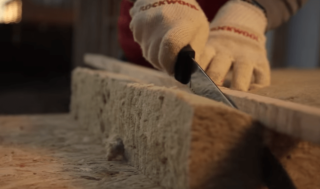
The main technical condition of the process is to maintain the structure of the material - the fibers must remain intact and maintain their position in space. In order for the dividing lines to be accurate and even, you must first mark the marker using a tailor's meter or rule. Cut the plates by placing them on the table so that the cutting line is on weight. After this, avoiding excessive pressure, make translational movements with the tool.
It is necessary to finish the sawing, holding the incised fragment on weight, so that it does not come off under its own weight.
Safe working conditions
The main component of mineral wool is thin and sharp fibers. In the process, they break away from the base and rise into the air. Contact with these particles on the body causes a burning sensation in the skin, pain in the eyes and irritation of the respiratory mucosa.
In order to prevent harm to their own health, it is necessary to create the following conditions for work:
- the exception of accidental entry to the workplace of strangers;
- removing people and animals to a safe place if cutting is done outdoors;
- use of overalls, a mask, a respirator, tight glasses and rubberized gloves;
- high-quality ventilation in the room, the exclusion of volatiles in neighboring rooms;
- cutting across the fibers to reduce the amount of volatile compounds;
- wet cleaning with preliminary cleaning of surfaces with a vacuum cleaner;
- covering the insulation with plaster, vapor permeable or windproof film for the purpose of complete insulation.
After cutting and installation, you need to take a shower, preferably under cool water, so that the fibers are easier to lag behind skin and hair.
Mineral wool residues
After thermal insulation, a certain amount of unspent material remains. Given its unique characteristics, there is no need to rush to get rid of scraps of plates. They can be used with benefit in the household. If this is not planned to be done immediately, the insulation must be hermetically packed and removed to a place inaccessible to children and animals.
It is advisable to use mineral wool for the insulation of such structures:
- doghouse;
- pet shed;
- blind area around the house;
- walls and ceiling of the garage;
- home workshop;
- basement;
- cellar for products.
You can benefit from the remains of mineral wool by putting it at a recycling point. Accepted material is sold to enterprises that make granules from it, which are used for re-production of insulation.
